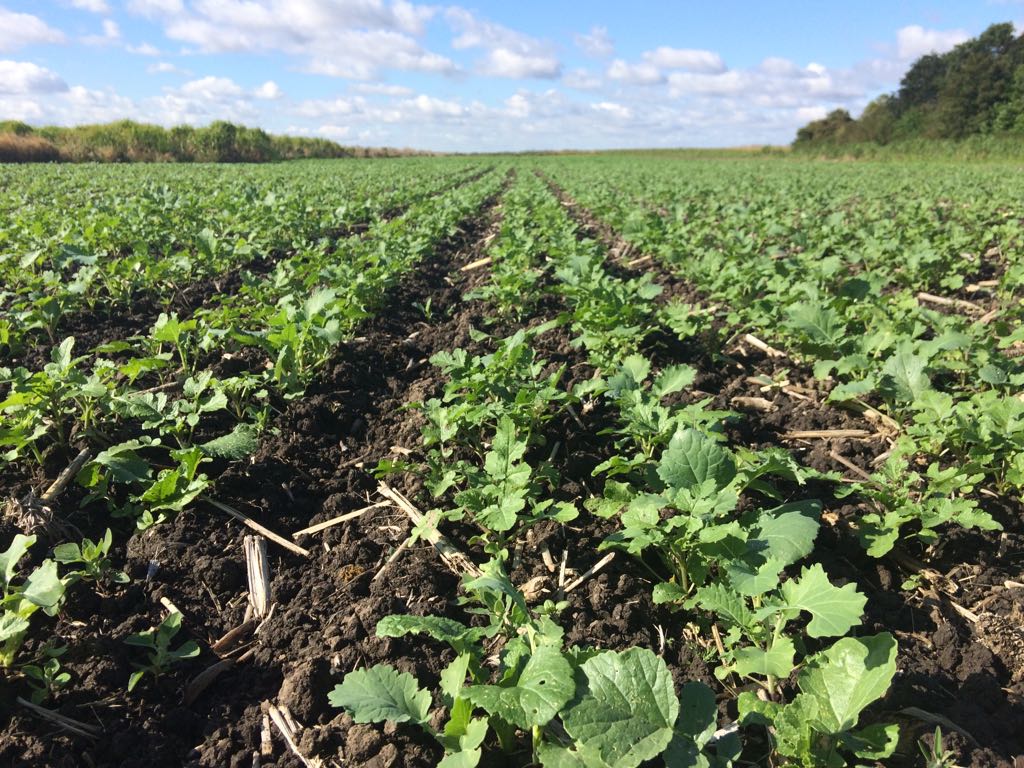Greening post-2020: What does it all mean?
As I'm sure many of you have noticed given the many news articles in recent weeks, there is still quite a bit of noise surrounding the change to greening rules for 2021.
While the announcement from George Eustice may have come on the 27th July, there is still an air of confusion amongst many growers, particularly in relation to current agreements and how best to plan ahead. This has been further amplified following the recent news confirming that there may now be a 'stepping stone' subsidy scheme from 2022 to cover the transition period to the Environmental Land Management (ELM) scheme which is due to launch in 2024.
Speaking of the initial changes, Mr Eustice stated that "The so-called greening requirements have added little to our environmental efforts. We believe that farmers will benefit from this reduced bureaucratic burden next year as we begin the move towards our new Environmental Land Management scheme which will deliver greater benefits for the environment." In essence, this means that as of 2021 the Department for Environment, Food and Rural Affairs (DEFRA) is removing the requirement to undertake these three elements of greening:
- Crop diversification
- Ecological Focus Areas (EFAs)
- Permanent pasture retention.
What does all mean in reality and is it as simple as it seems?
If you're feeling uncertain about the requirements now or what to do next, we've put some answers to common questions below.
- Do the new changes mean you can get rid of permanent pasture?
Since the announced changes, we've seen a number of enquiries specifically relating to rules around permanent pastures, with many growers unclear on whether or not they can now plough up any existing pasture on farm. As it happens, the changes to the greening rules actually have very little impact on this area. This is due to regulations that sit behind the land use of permanent pasture in England, and the Environmental Impact Assessment (EIA) rules are therefore still very much in place. In many cases, approval will still need to be sought from Natural England before any land changes that increase productivity can take place. You can find further information on the EIA rules and regulations here.
- Do the changes affect your EFA commitments for 2020?
This is another query that we've received a lot. If you are a grower in England, it's important to reiterate that the new changes do not come into play until January 2021. You must still carry out any EFA obligations you listed on your 2020 Basic Payment Scheme (BPS) application form back in May and for many, that will be the use of catch crops (20th August to 14th October) or cover crops (1st October to 15th January).
As of January 2021, these requirements will cease. However, this isn't to say that there are no longer opportunities to maximise on the EFA areas that 'could-have-been'. While the initial use of catch and cover crops within the farming system may have come about as a requirement of greening, for many there has been a significant journey involved to incorporate these features and the benefits are far more wide-ranging than simply meeting the rules of an agreement.
For some growers, the ability to capture nutrient loss, manage pests and diseases, improve soil structure/overall soil health and increase fertility for any following combinable crops will be considered money and effort well spent. As well as this, the removal of the 'double funding' crossover between greening and Countryside Stewardship means that the latter could provide significant returns for growers who go on to incorporate Mid Tier options. Furthermore, since we know that the new ELMs is not due for rollout until 2024 and the Government has confirmed there will be no risk financially to those in Countryside Stewardship, receiving payment of £114/ha for a cover crop will be very welcome as the BPS payments reduce.
- Are the rules the same in Scotland?
- How can you get yourself ready for the ELM scheme?
As we look to the future and proposed ELMs, it looks very likely that the options we saw in the greening and cross compliance elements of BPS will be firmly placed into 'Tier 1'. With that in mind, having a well managed and practical Countryside Stewardship scheme in place now could provide a useful route for accessing a continual funding stream when ELMs is up and running. In fact, this is one of the suggestions given in Mr Eustice's recent update, further details of which are due to published this autumn.
If you are a farmer, having a Countryside Stewardship agreement in place can secure additional income while you wait for these future changes. The transition between schemes will also give you valuable time to adapt your farm management strategies to help improve the farm environment, helping you to become more familiar with the requirements of such a scheme ahead of the ELMs launch. It really could be an excellent way to stand yourself in good stead.
Key points to take away
- Current greening rules for the 2020 BPS scheme year remain the same – therefore all catch and cover crops allocated in this year's forms must be in the ground this autumn.
- Changes to permanent pasture still need approval via an Environmental Impact Assessment.
- Crop diversification will no longer be required in England, so changes may be made to cropping choices this autumn.
- Although greening rules will been scrapped in England for 2021, the rules in Scotland are very different. There, EFAs will remain in place but the three-crop rule will be dropped.
- The changes for farmers in England are not a 'lost opportunity'. Try to look at the flexibility now on offer and the additional returns that could be available – for example, Countryside Stewardship could pay you for your EFA areas, many of which may already be in place. Some examples of this include:
o Cover crops = £114/ha
o Grass margins = £170-£512/ha (dependant on
location and area)
o Pollen and Nectar and Wild Bird Seed plots =
£511-£640/ha.
- The changes provide an opportunity to really plan ahead for a seamless transfer onto the new ELMs scheme.
As a subscriber, you’ll receive email alerts each time a new blog is published so you can always stay updated with the latest advice and insights from our experts








Comments